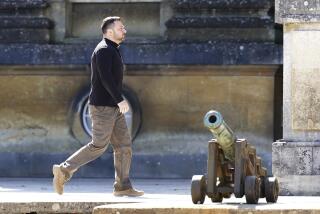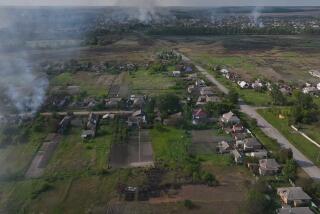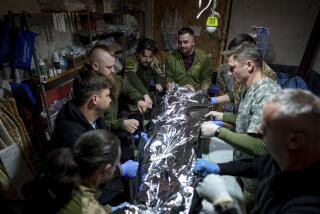Fighting Intensifies Near Croatian Town : Yugoslavia: The escalation shoots down a Kremlin attempt at mediation.
- Share via
BELGRADE, Yugoslavia — Serbian guerrillas and the renegade federal army pounded a key Croatian stronghold with mortar barrages Thursday and chased thousands of peasants from nearby villages ahead of what appeared to be a major push to conquer the shattered city of Vukovar in eastern Croatia.
The historic walled city of Dubrovnik, on Croatia’s Adriatic coast, also was attacked by federal forces from land and sea, the Tanjug news agency reported.
The latest escalation in the nearly four-month Yugoslav war shot down a Kremlin attempt at mediation, as well as the Serbian and Croatian presidents’ pledges to call off the mutual bloodletting.
Authorities in Zagreb have reported that more than 1,000 Croatian citizens--half of them civilians--have been killed in the months of fighting. Casualty figures have been kept secret by Belgrade, but hundreds of federal soldiers and Serbian rebels are also known to have died.
European Community leaders plan another round of peace talks in The Hague today, but an atmosphere of mistrust and vengeance has tainted those negotiations and all but abolished hope for a diplomatic solution.
The leaders of Serbia and Croatia have professed their agreement to a cease-fire at least nine times since ethnic clashes broke out after declarations of independence by Croatia and Slovenia in late June. Each claimed breakthrough has provided only a short breathing space before even more intense fighting.
Running battles between Croatian national guardsmen and the Serbian-controlled federal army have virtually destroyed Vukovar, once a city of 50,000. Vukovar is seen by both sides as a strategic foothold in the ethnically mixed Slavonia region of eastern Croatia.
Both Croatian and Serbian television have carried extensive footage from the battered city, showing bullet-riddled buildings and streets littered with glass and burned-out vehicles.
An EC aid convoy has been attempting to bring in food and medicine to Vukovar for a week, but mortar barrages and roadblocks imposed by both sides have hampered the rescue effort.
Relief workers also hoped to move more than 200 wounded from the city’s main hospital, where staff and patients have been forced to take cover in the basement to escape the nearly constant shelling during the last two months.
Croatian Radio reported that thousands of Croats and Hungarians are being driven from their homes in and around Ilok, a predominantly Serbian town just across the Danube River inside Croatia. State-run media in Zagreb speculated that the expulsions are intended to clear the way for an all-out offensive against Vukovar, a few miles up river.
Tanjug portrayed the transport of 4,500 women, children and elderly villagers from the Ilok area as an evacuation. Hundreds more Croatian fighters surrendered their weapons and fled the area, a stretch of Croatian territory jutting into Serbia that would be difficult or impossible to defend.
The army last week warned Croatian civilians to leave Ilok or risk attack in the federal push toward Vukovar.
Media in both republics reported Vukovar under fire, as well as fresh clashes in Osijek and other flash points in eastern Croatia.
Zagreb has set a Nov. 10 deadline for complete withdrawal of federal troops from Croatia. But the army and the staunchly nationalist leadership under Serbia’s strongman, President Slobodan Milosevic, have vowed not to abandon areas of Croatia where ethnic Serbs are a majority.
Serbs account for about 12% of Croatia’s 5 million residents. Many oppose Croatia’s declared secession because they fear a recurrence of the ethnic atrocities meted out by the last independent state of Croatia, the Nazi puppet regime established in 1941.
Croatian leaders deny the Serbian accusations of fascist tendencies and in turn charge Belgrade with plotting to build a Greater Serbia by grabbing as much former Yugoslav territory as possible. About one-third of Croatia is now occupied by Serbian militants and federal troops supporting them.
The battles around Vukovar intensified only 24 hours after Milosevic and Croatian leader Franjo Tudjman promised Soviet President Mikhail S. Gorbachev to search for a peaceful resolution of the war within 30 days.
Milosevic, a virtual recluse, held an unprecedented news conference during his Moscow visit, praising Gorbachev’s firm grasp of the situation and Serbia’s longstanding ties with the Soviet Union.
Another peace mission has been undertaken by Cyrus R. Vance, a former American secretary of state and now a special U.N. emissary who arrived in Zagreb on Thursday.
More to Read
Sign up for Essential California
The most important California stories and recommendations in your inbox every morning.
You may occasionally receive promotional content from the Los Angeles Times.














